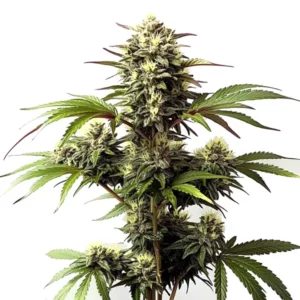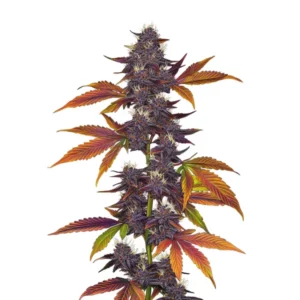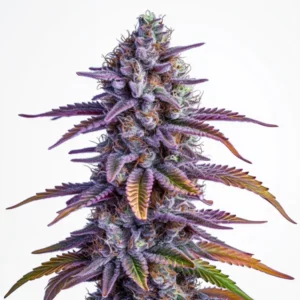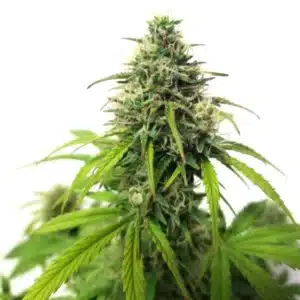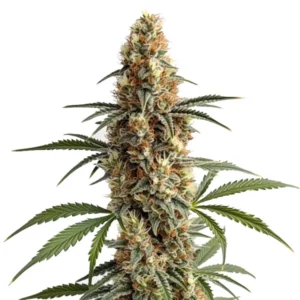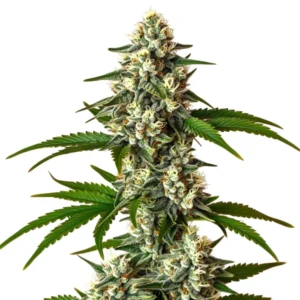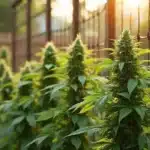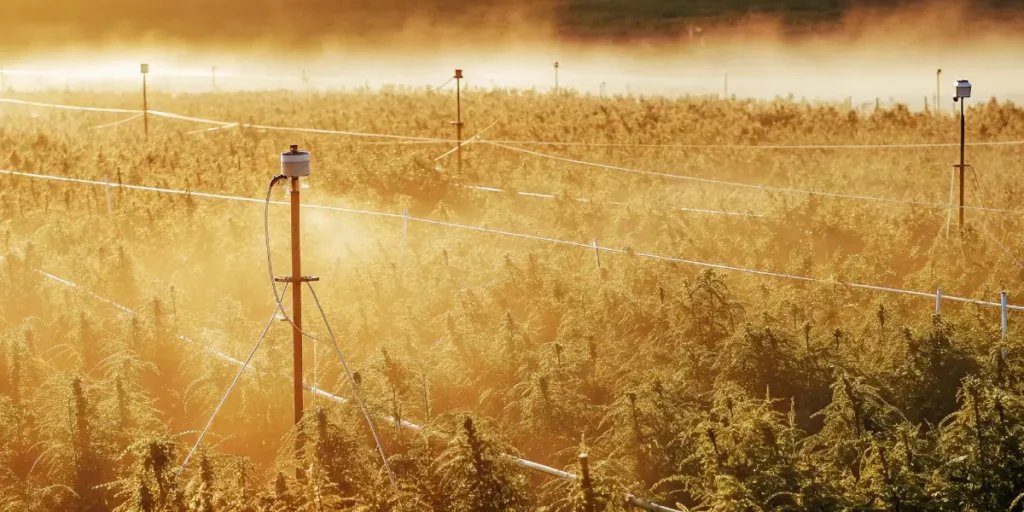
How to Use Sensors to Monitor Cannabis Water Stress
Growing cannabis can be a rewarding journey, but it comes with its challenges. One of the biggest hurdles is ensuring your plants are well-watered without overdoing it. This is where learning how to use sensors to monitor cannabis water stress becomes invaluable. Sensors provide real-time data, helping you keep your plants healthy and thriving.
Using sensors for cannabis water stress monitoring has revolutionized the way growers care for their crops. These small devices measure things like soil moisture, temperature, and humidity, giving you insights into when your plants really need water. This helps prevent both under-watering and over-watering, which can stress plants and reduce yields.
Recommended Strains
Alaskan Purple
-
THC: 15% - 20%
-
Type of seed: Feminized
-
Phenotype: 30% Sativa / 70% Indica
-
Flavor: Citrus, Earthy, Hashish, Sweet
-
Day to flower: 8 - 10 weeks
Auto Purple CBD
-
THC: 0.2% - 0.5%
-
Type of seed: Autoflowering
-
Phenotype: 30% Sativa / 70% Indica
-
Flavor: Citrus, Sweet
-
Life cycle of: 8 - 10 weeks
Investing in cannabis plant water stress sensor technology can seem daunting, especially for first-time growers. However, the benefits far outweigh the initial learning curve. With the right sensors, you can ensure that strains like YieldMax, known for its high productivity, receive optimal watering conditions.
Why Monitor Water Stress in Cannabis?
Cannabis plants are sensitive to water stress, which can impact their growth and yield. Water stress occurs when there is too little or too much water in the soil. This can cause leaves to droop, turn yellow, or even lead to root rot in severe cases. By monitoring water stress, you can avoid these issues and keep your plants healthy.
Sensor-based cannabis water stress detection allows you to pinpoint the exact needs of your plants. This precision is especially important for high-value strains like Crystal Candy. These sensors ensure the delicate balance of hydration is maintained, promoting robust growth and potent harvests.
Knowing how to use sensors to monitor cannabis water stress is integral to maintaining plant health. These technologies provide a window into the subterranean world of your plants’ root systems, allowing for immediate action when water levels are not ideal. This proactive approach ensures that your plants not only survive but thrive throughout their growth cycle.
Moreover, using sensors for cannabis water stress monitoring aids in resource conservation. By avoiding over-watering, growers can save water, reduce runoff, and minimize the risk of nutrient leaching, which can be detrimental to both plant health and the environment. This sustainable approach to cultivation is increasingly important in a world where resource efficiency is becoming paramount.
Types of Sensors for Water Stress Monitoring
Several types of sensors are available for cannabis growers. Soil moisture sensors are among the most popular. These devices measure the amount of water in the soil and can alert you when it’s time to water your plants. Some advanced models even connect to your smartphone, providing real-time updates.
Another valuable tool is the humidity sensor. Cannabis plants thrive in specific humidity ranges, and these sensors help maintain those levels. When paired with a smart irrigation system, they can automatically adjust watering schedules based on current humidity levels.
Temperature sensors also play a crucial role. Extreme temperatures can exacerbate water stress, so monitoring these can help you create a stable environment. Combining these sensors gives you a comprehensive picture of your plant’s needs, allowing you to make informed decisions.
Advanced sensor technology offers more than just basic measurements. Some systems use data analytics to predict future water stress scenarios, enabling growers to take preemptive action. Integrating these systems into your grow operation can significantly enhance how you manage your plants, providing insights that were previously unattainable.
Additionally, understanding how to use sensors to monitor cannabis water stress allows you to tailor real-time monitoring systems to different growth stages. By adjusting sensor parameters as your plants progress from seedlings to mature plants, you ensure that each phase of growth receives the optimal conditions it requires. This adaptability is key to maximizing yield and quality across different cannabis strains.
Promos & Deals
Implementing Sensor Technology in Your Grow
Setting up sensors for your cannabis grow might sound technical, but it’s straightforward with a bit of guidance. Start by choosing the right sensors for your needs. For instance, if you’re growing a strain like Purple Haze, known for its sensitivity to environmental changes, investing in a complete sensor suite might be wise.
Once you have your sensors, install them according to the manufacturer’s instructions. Place soil moisture sensors near the root zone for accurate readings. Humidity and temperature sensors should be at canopy level, where they can monitor the conditions your plants experience.
Proper installation and placement of sensors are critical for effective monitoring. Ensure that sensors are securely positioned and protected from potential damage or interference. This will not only prolong the life of your equipment but also ensure the accuracy of your data.
Integrating sensors with existing grow systems can enhance your cultivation strategy. For instance, learning how to use sensors to monitor cannabis water stress is key to connecting them with an automated irrigation system. This approach streamlines how you manage water delivery, ensuring that your plants receive the precise amount of water needed at any given time. This integration represents a significant advancement in optimizing cannabis irrigation with sensors.
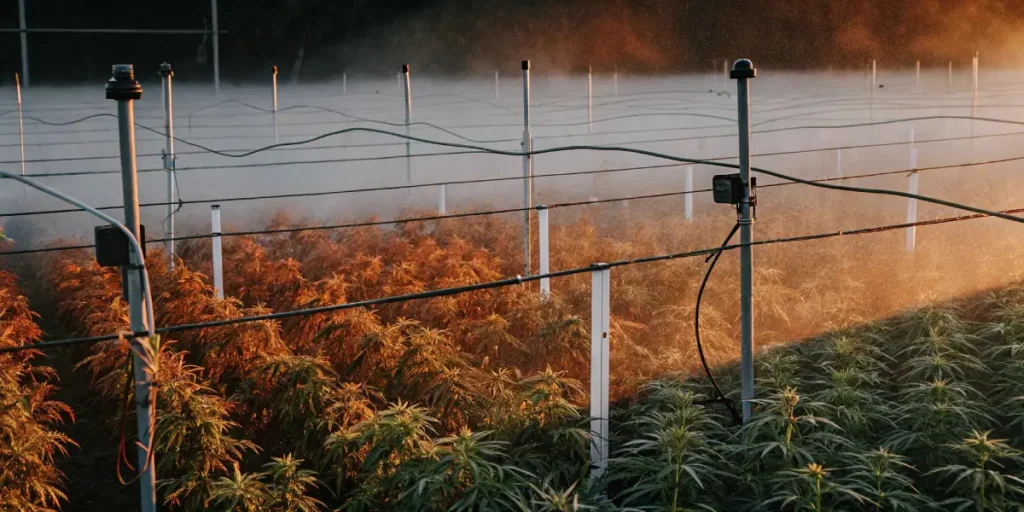
Calibrating and Maintaining Your Sensors
Calibration is crucial for accurate readings. Follow the instructions provided with your sensor to ensure it provides reliable data. This might involve comparing the sensor’s readings with a manual check initially and making adjustments as needed.
Regular maintenance is also essential. Check your sensors regularly to ensure they’re functioning correctly. Clean them as needed to remove any dust or debris that could affect their performance. This helps maintain the accuracy of your real-time cannabis water stress monitoring systems.
Routine calibration and maintenance not only enhance sensor accuracy but also extend the life of your equipment. By investing time in these tasks, you safeguard your investment and ensure that your plants receive the best possible care.
Documenting sensor performance and maintenance activities can be beneficial. By keeping a log, you can track sensor reliability and pinpoint any recurring issues, allowing for quicker troubleshooting and resolution. This systematic approach contributes to more stable and predictable growing conditions.
Practical Tips for Using Sensors Effectively
Using sensors is not just about installation and data collection; it’s about interpreting that data correctly. Start by familiarizing yourself with the normal ranges for your plant’s environment. This helps you identify when something is off and take corrective action promptly.
Set thresholds for alerts on your sensor systems. Learning how to use sensors to monitor cannabis water stress ensures you’re notified of potential issues before they become significant problems. Adjust these thresholds as your plants grow and their needs change. This adaptability is key to successful sensor-based cannabis water stress detection.
Developing a keen knowing of your sensor data can significantly impact your cultivation success. By regularly reviewing data trends, you can anticipate potential issues and adjust your cultivation practices accordingly. This level of insight is invaluable for maintaining plant health and maximizing yields.
Additionally, sharing your insights and experiences with a community of fellow growers can provide new strategies and solutions. Engaging with others who are also using sensors for cannabis water stress monitoring can offer fresh perspectives and collaborative problem-solving opportunities.
Integrating Sensors with Irrigation Systems
For even greater efficiency, integrate your sensors with an automated irrigation system. This setup allows your plants to receive water precisely when they need it, based on real-time data. Many modern systems can be controlled via mobile apps, giving you remote access to your grow conditions.
This integration is particularly beneficial for large-scale grows or when you’re cultivating multiple strains with varying needs. It reduces the time and effort required for manual watering, allowing you to focus on optimizing other growth factors.
Automated irrigation systems, when paired with sensors, can significantly reduce water waste and improve the sustainability of your grow operation. This eco-friendly approach not only benefits your plants but also aligns with environmentally responsible cultivation practices.
Furthermore, these systems provide peace of mind for growers who may not always be on-site. By learning how to use sensors to monitor cannabis water stress, you can ensure your plants are consistently cared for, regardless of your physical location. This reliability is crucial for maintaining optimal growing conditions around the clock.
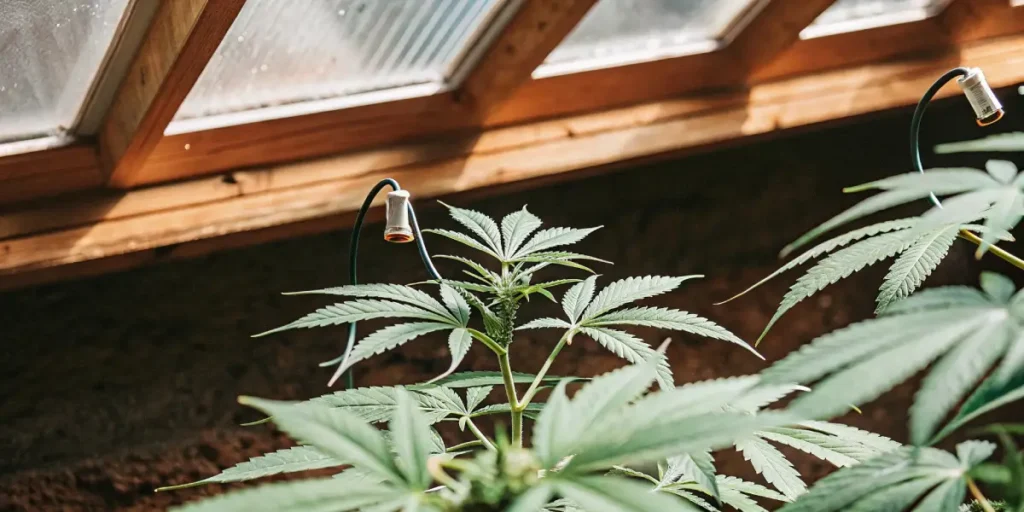
FAQs
What are the benefits of using sensors in cannabis cultivation?
Sensors provide precise data on your plant’s environment, helping you make informed decisions about watering and other care aspects. This can reduce water usage, prevent plant stress, and increase yields. By using technology to monitor conditions, you can focus on creating the best possible growing environment for your strains.
Additionally, sensors help automate the growing process. For busy growers, this means less time spent on manual checks and more time to enjoy the fruits of your labor. With less guesswork involved, you’re more likely to achieve consistent results with each harvest.
By incorporating sensor technology, you can also enhance the financial viability of your grow operation. Accurate data collection can lead to more efficient resource use, reducing costs and potentially increasing profit margins. This economic advantage is particularly appealing for commercial growers.
Moreover, the data gathered by sensors can contribute to ongoing research and development. Sharing your findings with the scientific community can help refine cannabis cultivation techniques, leading to industry-wide improvements and innovations.
How do soil moisture sensors work?
Soil moisture sensors measure the amount of water in the soil by detecting electrical resistance or capacitance changes. As soil moisture levels fluctuate, these changes are detected, providing a reading that indicates whether your plants need watering.
These sensors are typically simple to install and can be placed directly in the soil near your plant’s roots. They are an invaluable tool in ensuring your plants receive the right amount of water, preventing both drought stress and over-watering.
The simplicity of soil moisture sensors makes them accessible to growers of all experience levels. Whether you’re a novice or a seasoned cultivator, these devices offer a straightforward way to enhance your knowing of plant hydration needs.
As technology advances, newer models of soil moisture sensors are becoming available with more sophisticated features. These may include wireless connectivity and integration with other smart devices, providing even greater control over your growing environment.
Can sensors be used for all cannabis strains?
Yes, sensors can be used for any cannabis strain. However, different strains have specific environmental preferences, so it’s essential to set your sensors according to the needs of each strain. This ensures optimal growth and maximizes yield potential.
For example, a strain like Purple Haze might have different moisture and temperature requirements than YieldMax. Customizing your sensor settings for each strain can significantly enhance your growing results.
Knowing the unique needs of each strain is crucial for successful cultivation. By using sensors, you can tailor your approach to cater to these needs, ensuring each strain receives the optimal conditions required for its development.
This customization not only improves the quality and quantity of your yields but also allows you to experiment with new strains confidently. With precise data at your fingertips, you can explore a wider range of genetic varieties while minimizing the risk of growth setbacks.
Are there cost-effective options for beginners?
Yes, there are many affordable sensor options suitable for beginners. Basic soil moisture sensors can be purchased at a low cost and provide essential data to help you manage your grow. As you gain experience, you can invest in more advanced systems.
Starting with affordable options allows you to learn the basics of sensor technology without a significant financial commitment. Once you’re comfortable, you can expand your setup to include additional sensors for a more comprehensive monitoring system.
Budget-friendly sensors are an excellent entry point for newcomers to the world of cannabis cultivation. They provide a manageable learning curve while still delivering valuable insights into your plant’s environmental needs.
As your confidence and knowledge grow, you may choose to upgrade to more sophisticated systems. These advanced models offer enhanced capabilities, such as data logging and remote monitoring, which can further optimize your growing processes.
How often should sensors be checked or calibrated?
It’s a good practice to check your sensors regularly, at least once a month. Calibration should be done according to the manufacturer’s recommendations, which is typically every few months or whenever the sensor’s accuracy is in question.
Regular checks and calibration ensure your sensors provide reliable data. This diligence helps maintain optimal growing conditions, contributing to the health and productivity of your cannabis plants.
Keeping a routine schedule for sensor checks and maintenance can prevent potential issues from escalating. This proactive approach is essential for preserving the integrity of your growing environment and ensuring your plants remain healthy.
Additionally, consider setting reminders or using a calendar to track maintenance activities. This organizational strategy ensures that sensor upkeep becomes a seamless part of your cultivation routine, minimizing the risk of oversight.

